Just like rainwater dissolves the bedrock on the Earth’s crust and form sinkholes, meltwater on a glacier’s surface can melt ice and form sinkholes too. Sinkholes on glaciers are called moulins, French for “mill”. Moulins form when summer meltwater streams on the surface of the glacier finds a crevasse or other weak spot in the ice and begins to pour down through the ice. As the water moves downward, its turbulence and heat creates a narrow, tubular and vertical shaft, up to 10 meters wide, that can go all the way down to the bottom of the glacier, hundreds of meters deep. Water entering a moulin eventually exits the glacier at base level where it acts like a lubricating fluid, that plays a big role on how fast the glacier flows. The melting water accelerates the glacier’s flow to the sea, where large chunks break off to form icebergs, leading to further ice loss by speeding disintegration of the ice sheet.
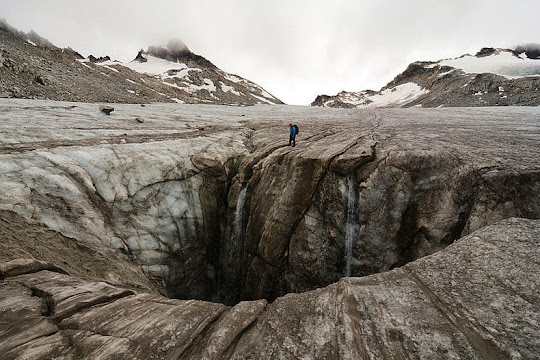
A hiker stands next to a massive moulin on Snowbird Glacier.
Given enough water flow, a moulin can easily form over the course of just a month. Once formed, the shaft will stay open as long as there is meltwater to feed the moulin. If the meltwater freezes, the moulin will begin to fill up with snow and close up. Some moulins have been observed to be present in the same spot for multiple years, though the spot will constantly move forward with the flow of the ice.
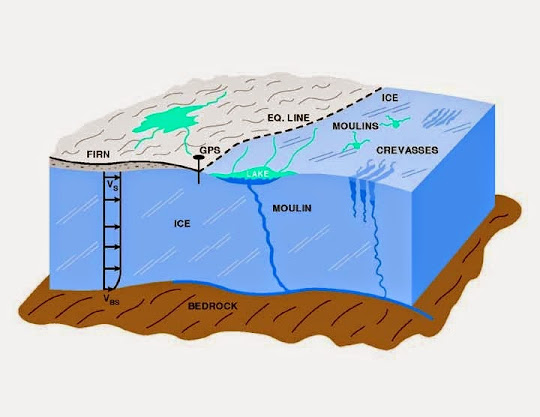
Schematic drawing of glacial features illustrating how moulins transport surface water to the base of the glacier.
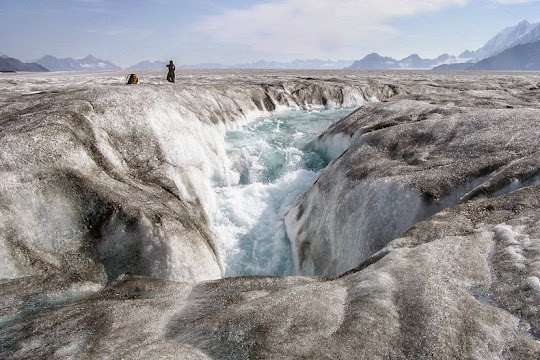
A moulin cuts through Bering Glacier.
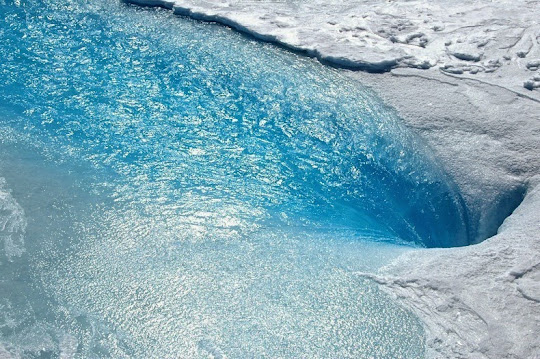
Meltwater pouring into a moulin on Greenland.
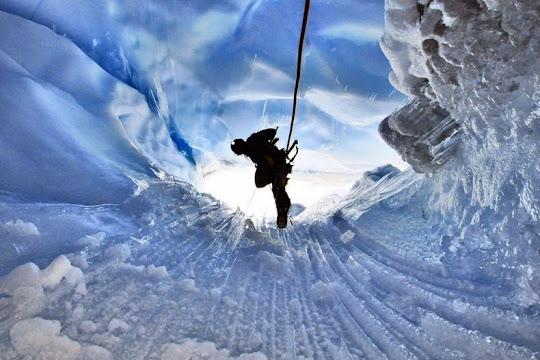
A hiker descends inside a moulin, Greenland.

An explorer scaling a moulin on Mer de Glace glacier in Chamonix, France.
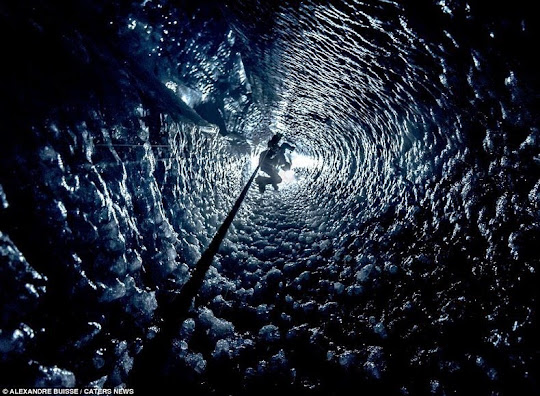
An explorer scaling a moulin on Mer de Glace glacier in Chamonix, France.
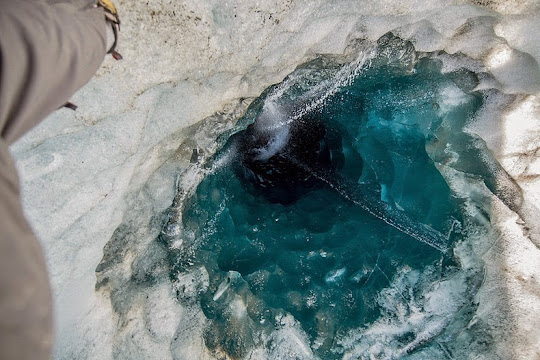
A moulin on Mendenhall Glacier.
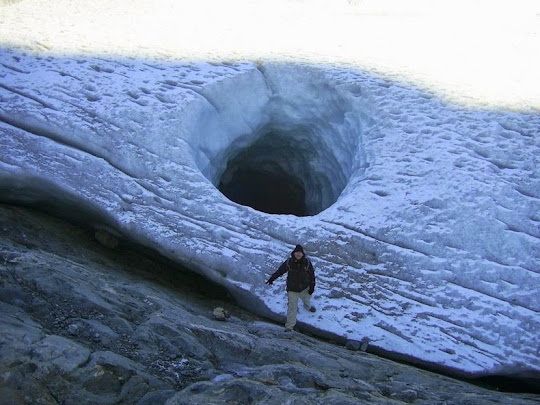
A moulin on Mendenhall Glacier.
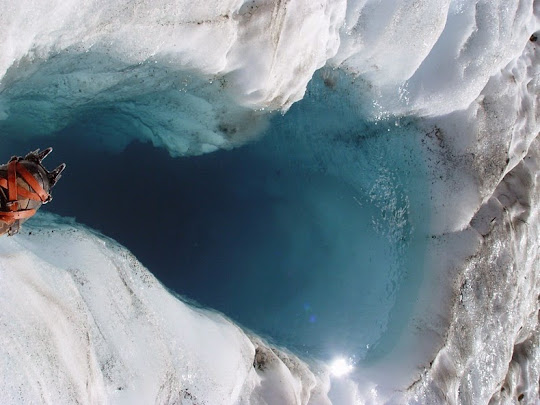
A moulin filled with water on Columbia Glacier.

Surface water entering a moulin on Athabasca Glacier.
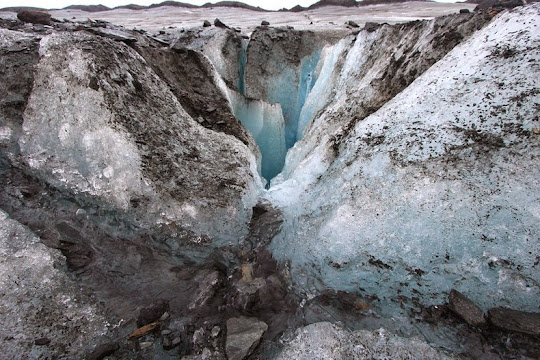
A moulin on Malaspina Glacier.
Source
READ MORE»

A hiker stands next to a massive moulin on Snowbird Glacier.
Given enough water flow, a moulin can easily form over the course of just a month. Once formed, the shaft will stay open as long as there is meltwater to feed the moulin. If the meltwater freezes, the moulin will begin to fill up with snow and close up. Some moulins have been observed to be present in the same spot for multiple years, though the spot will constantly move forward with the flow of the ice.

Schematic drawing of glacial features illustrating how moulins transport surface water to the base of the glacier.

A moulin cuts through Bering Glacier.

Meltwater pouring into a moulin on Greenland.

A hiker descends inside a moulin, Greenland.

An explorer scaling a moulin on Mer de Glace glacier in Chamonix, France.

An explorer scaling a moulin on Mer de Glace glacier in Chamonix, France.

A moulin on Mendenhall Glacier.

A moulin on Mendenhall Glacier.

A moulin filled with water on Columbia Glacier.

Surface water entering a moulin on Athabasca Glacier.

A moulin on Malaspina Glacier.
Source
